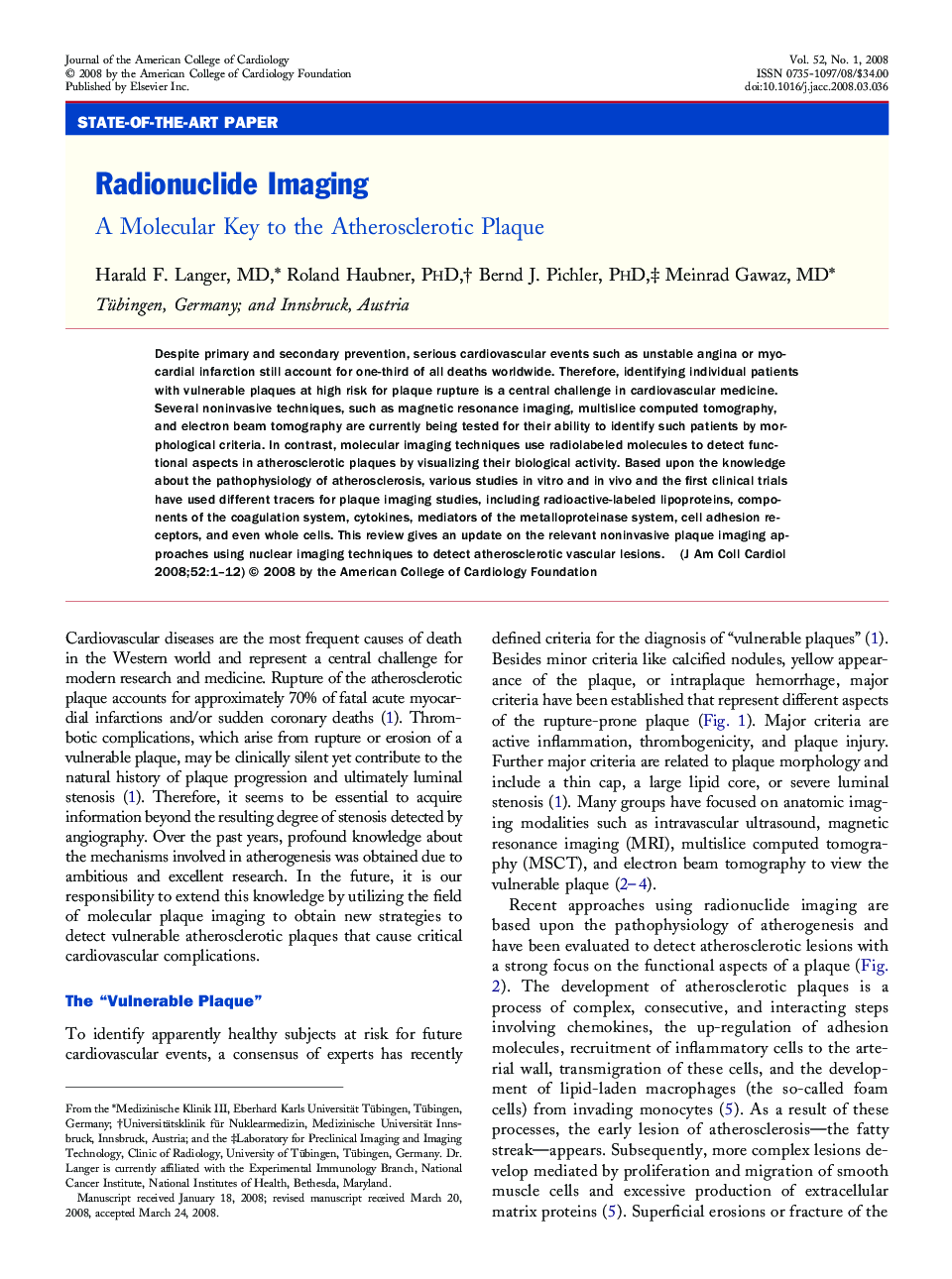| Article ID | Journal | Published Year | Pages | File Type |
|---|---|---|---|---|
| 2953706 | Journal of the American College of Cardiology | 2008 | 12 Pages |
Despite primary and secondary prevention, serious cardiovascular events such as unstable angina or myocardial infarction still account for one-third of all deaths worldwide. Therefore, identifying individual patients with vulnerable plaques at high risk for plaque rupture is a central challenge in cardiovascular medicine. Several noninvasive techniques, such as magnetic resonance imaging, multislice computed tomography, and electron beam tomography are currently being tested for their ability to identify such patients by morphological criteria. In contrast, molecular imaging techniques use radiolabeled molecules to detect functional aspects in atherosclerotic plaques by visualizing their biological activity. Based upon the knowledge about the pathophysiology of atherosclerosis, various studies in vitro and in vivo and the first clinical trials have used different tracers for plaque imaging studies, including radioactive-labeled lipoproteins, components of the coagulation system, cytokines, mediators of the metalloproteinase system, cell adhesion receptors, and even whole cells. This review gives an update on the relevant noninvasive plaque imaging approaches using nuclear imaging techniques to detect atherosclerotic vascular lesions.
